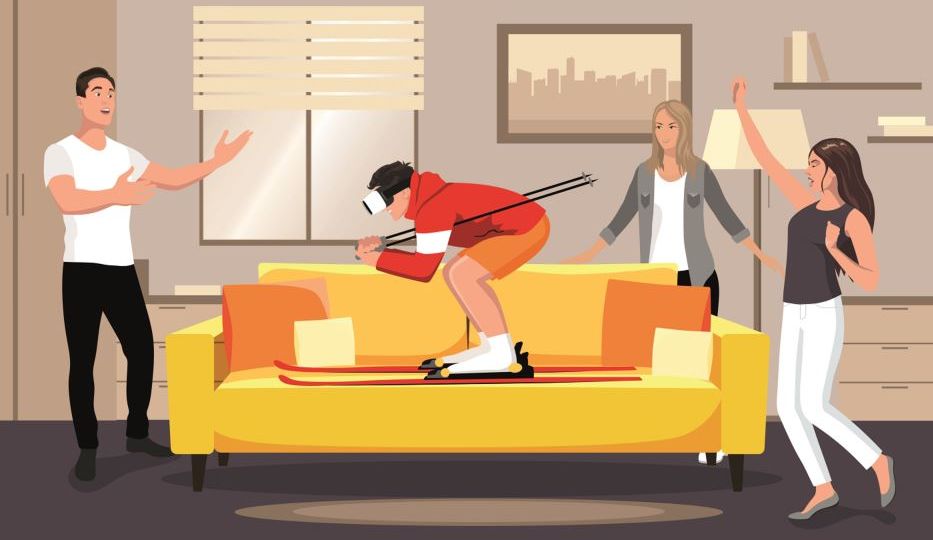
MTM ASSOCIATION e. V. and technology partner Halocline GmbH & Co. KG, are pulling in the same direction when it comes to digital work planning. The interface solution MTMmotion® makes it possible. We asked the main players Krzysztof Izdebski, Halocline, and Dr. Martin Benter, MTM ASSOCIATION e. V., about it:
Krzysztof, Halocline deals with virtual reality technology – what is it exactly?
VR, i.e. Virtual Reality, is a technology that allows you to interact in a computer-generated environment and adjust it at will – as intuitively as if you were in the real environment. In terms of work planning, this means that I can simply go through the work process in VR, try out all the options myself and ultimately decide on the best solution, instead of spending a lot of time and effort programming a simulation.
Krzysztof, your business field is production planning in virtual reality – what specific advantages does the use of VR offer users?
The opportunity to try out processes for yourself should not be underestimated. As humans, we are very good at understanding the world through trial and error and adapting. Work planners gain a feel for different solutions through trial and error – and colleagues on the shop floor can understand and provide feedback on these ideas. Because the VR system can see a lot of data, planners can also see where there is room for improvement in the process. This opens up the possibility of true collaboration between the user and the system. The human can focus on creative work because the VR system makes the errors clearly visible. If, for example, the work processes are not ergonomically designed, the system shows what steps need to be taken to optimize them. In other words, in the real world, the human has learned what a shelf is. In the virtual world, the shelf knows who the person is.
Krzysztof, why are you focusing on production planning in the manufacturing industry?
Because that’s where we see the greatest added value we can offer with VR technology. Our goal is to ultimately support the entire planning process with VR. We leverage the strengths of VR where we think it’s the best option for our customers – and we interface with other tools where they complement our software.
Martin, that’s where the MTMmotion® interface solution comes in. What can the tool do?
Quite simply, MTMmotion® translates digital motion data into an MTM analysis at the push of a button – and into the corresponding MTM building block system, depending on the application.
Martin, what prompted this development project at the MTM Institute?
We have generally taken up the cause of digitizing work planning. After all, our goal is to make the industrial engineer’s daily work easier. Since process planning, time determination, ergonomics assessment, etc. are increasingly taking place in a digitized environment, we also have to provide the experts in the companies with the appropriate tools. What’s more, there are requirements from the manufacturing industry. Many users or companies that already use the MTM method standard want to become faster and more digital when creating MTM analyses. And last but not least, the technology providers themselves have an interest in delivering correct results, i.e. valid time data. Even with Halocline’s VR technology, validation with MTMmotion® ensures that the planning results are correct in terms of time. The entire process is more comprehensible, less prone to errors, and thus more efficient.
Krzysztof, what is your opinion on this?
One of the most important factors in production planning is time. As a work planner, you need time data to efficiently allocate tasks on the store floor. Manually creating an MTM analysis is quite time-consuming. But with motion data from VR technology and MTM analyses derived from it, the planner gets there easier and faster – and has the time to experiment with different ideas and come up with the best solution. Our specialty is the generation and comprehensible presentation of data, MTM’s specialty is their interpretation. Together, we offer users a reliable data-driven planning tool – soon to be available in the cloud.
Martin, why is MTM even looking to join forces with providers of technologies such as VR, motion capture or simulation?
In my opinion, this is an obvious choice, because for all of these technologies and thus for the tool manufacturers, the question arises – usually very quickly – about the duration of the planned processes or movements. In addition, most of the information required for the application of the MTM process is collected by the technologies anyway. This includes, for example, product design with CAD systems, the planning of workstations with VR, the synchronization or design of complex systems with simulation programs, or even the adaptation of workstations during operation via MoCap suits.
Find out more at the MTM SUMMIT 2024 – information and tickets at summit.mtm.org
Online tickets are free of charge!!!